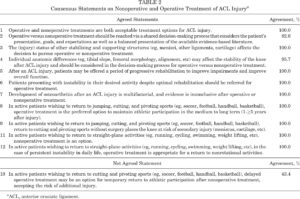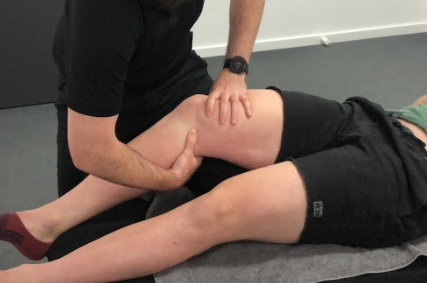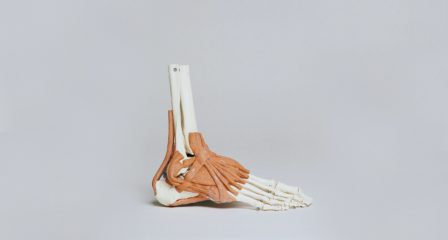There is common misconception surrounding ACL injuries, that operative management is the only way forward in achieving good functional outcomes. Historically, those who have sustained an injury have been rushed into surgery for a reconstruction, regardless of age, level of function, goals, anatomy and ligament laxity. More recently, evidence has begun to demonstrate positive outcomes for some individuals who pursue non-operative management. At the same time, there is some evidence suggesting a higher risk of arthritis in those who pursue surgical reconstruction. So how do we decide?
Recently, an international consensus group of experts was convened to collaboratively advance toward consensus opinions regarding the best available evidence on operative versus non-operative treatment for ACL injury. There were 66 international experts representing 18 countries, and the following consensus statements were decided after discussion of the available evidence and debate.

As you can see, the decision making process is not black and white. In fact it is highly individualised and must consider the nature of the injury (isolated or combined with other injured tissues), the patients goals and expectations, anatomy (some people are more predisposed to such injuries), and clinical instability. What the above table does not consider are the financial considerations that come with surgery (cost and time off work), the individuals compliance to rehabilitation, and the individuals coping strategies (with pain, trauma of surgery, rehab commitments). Considerations regarding age, gender, hormonal and nutritional elements are also important considerations.
What the experts agree on unanimously, is in highly active patients engaged in jumping, cutting, and pivoting sports, ACL reconstruction is recommended because of the high risk of secondary meniscal and cartilage injuries, although a period of progressive rehabilitation to resolve impairments and improve neuromuscular function is recommended. For individuals who seek to return to straight-plane activities, non-operative treatment with a structured and progressive strength and conditioning program is an acceptable treatment option.
Chat with your physiotherapist and make a decision that works for you, but it is often not so black and white as commonly believed.
REFERENCE:
Diermeier et al (2020). Treatment After Anterior Cruciate Ligament Injury- Panther Symposium ACL Treatment Consensus Group. The Orthopaedic Journal of Sports Medicine, 8(6), DOI: 10.1177/2325967120931097



